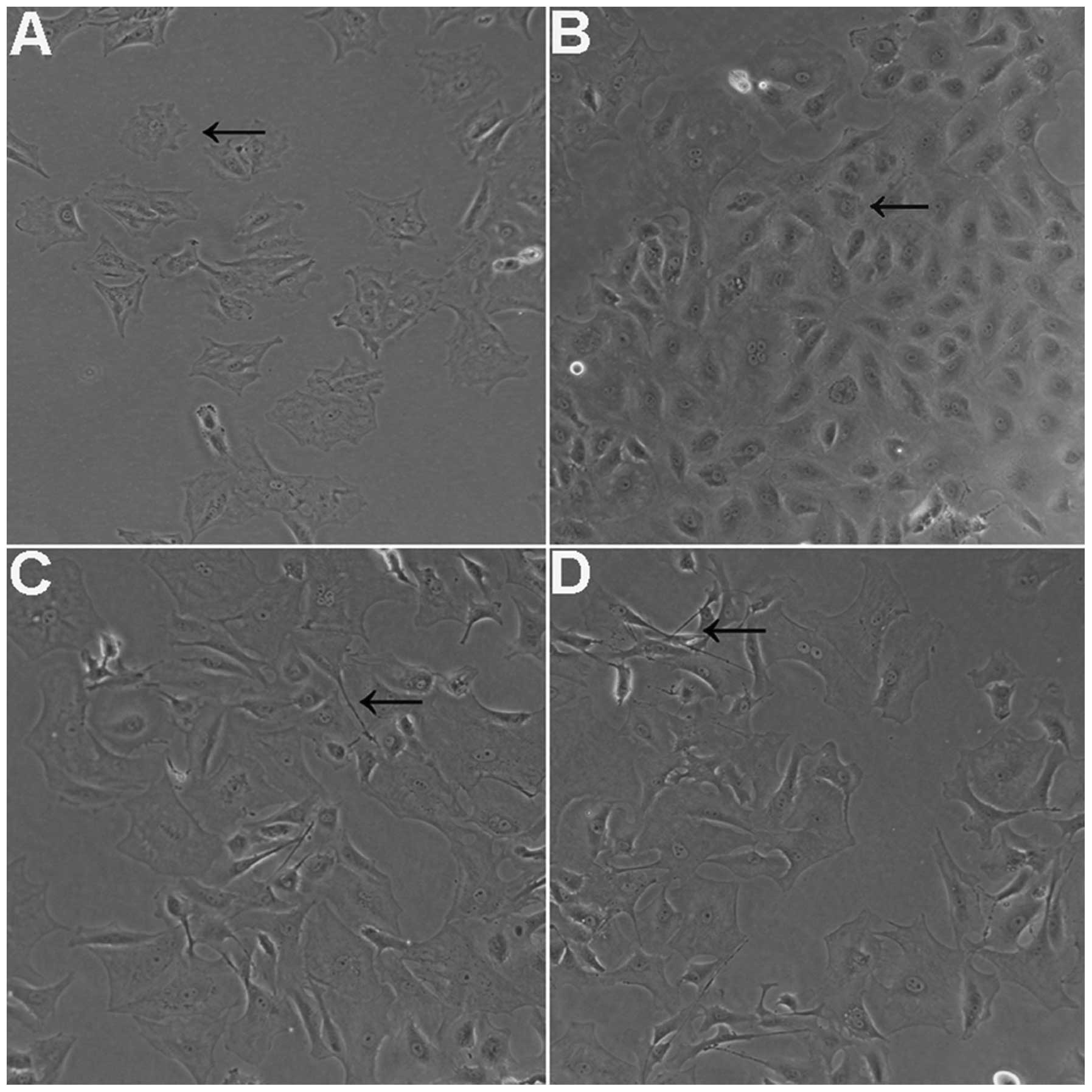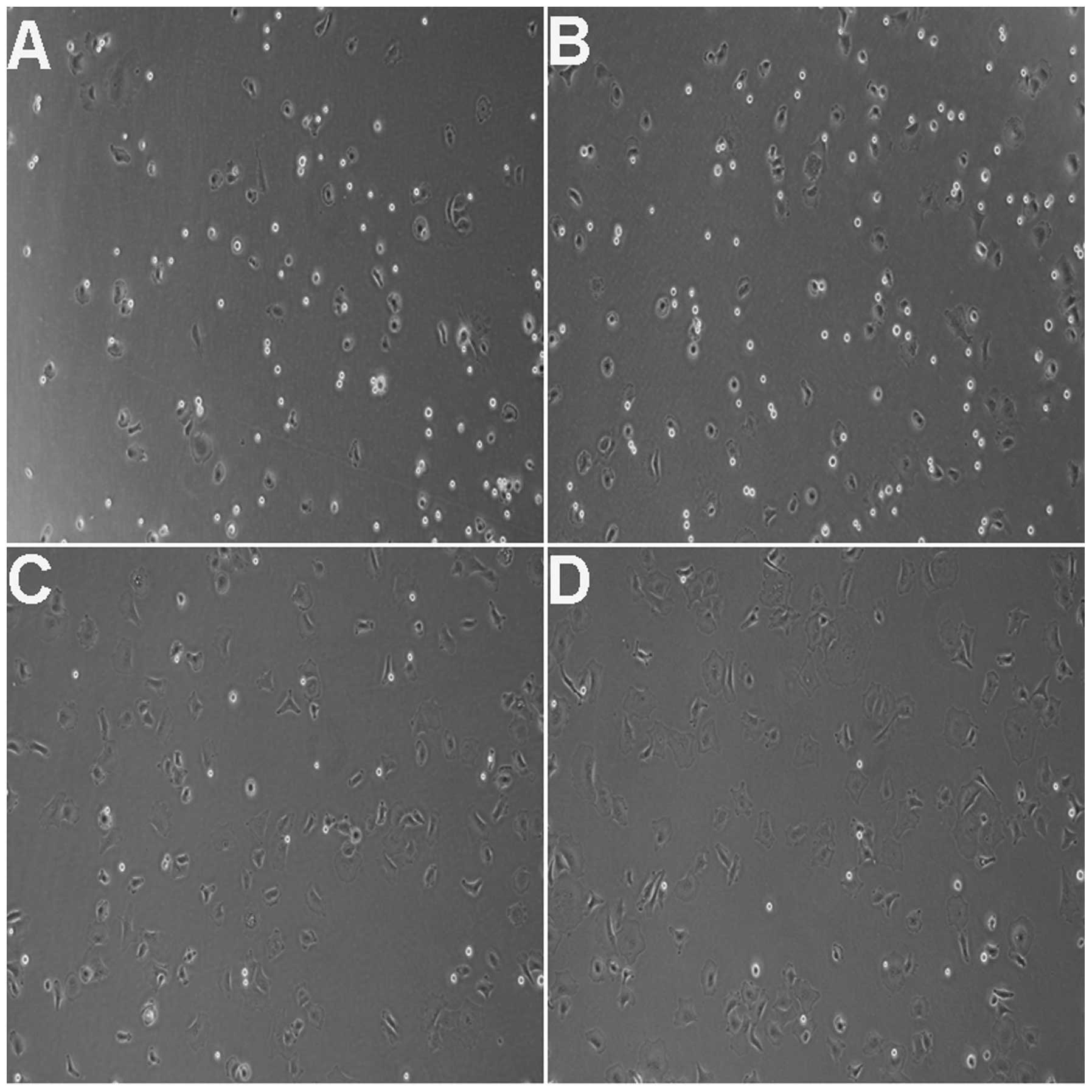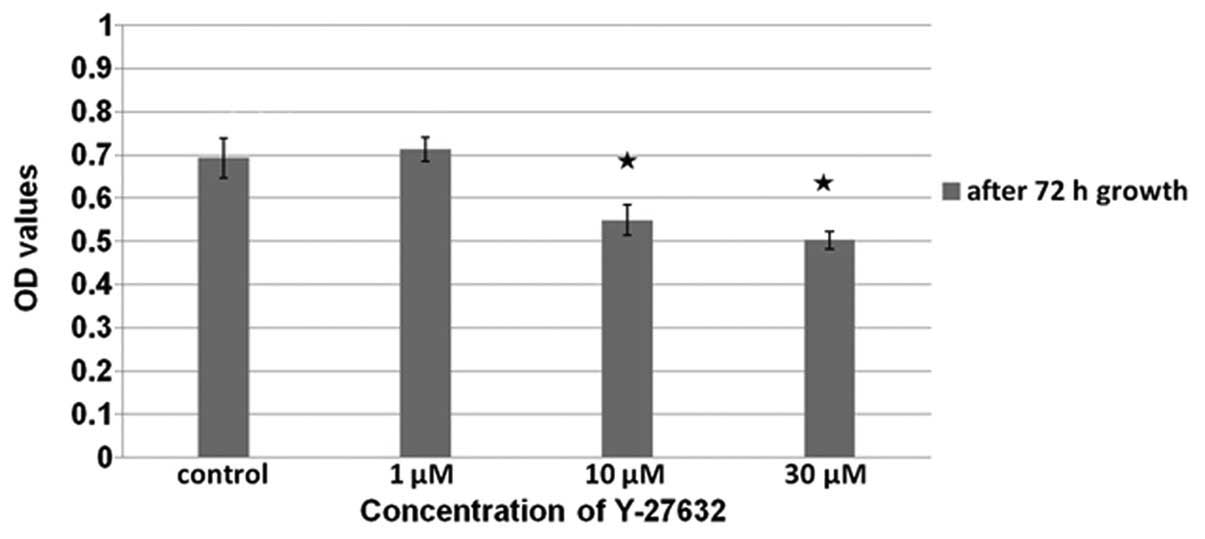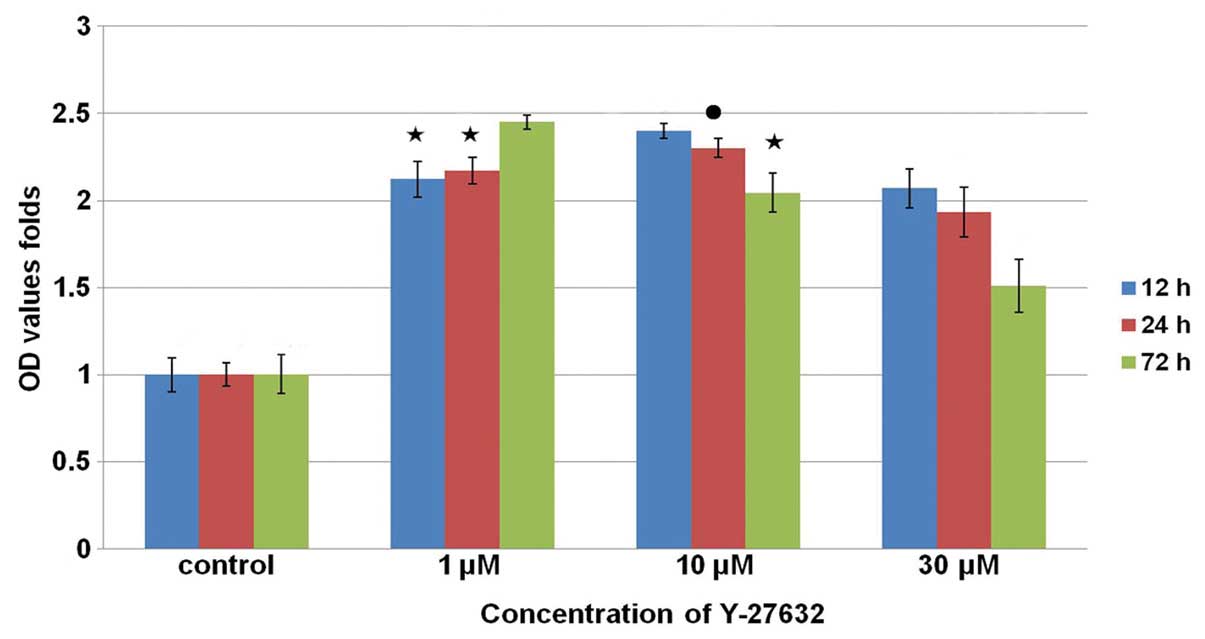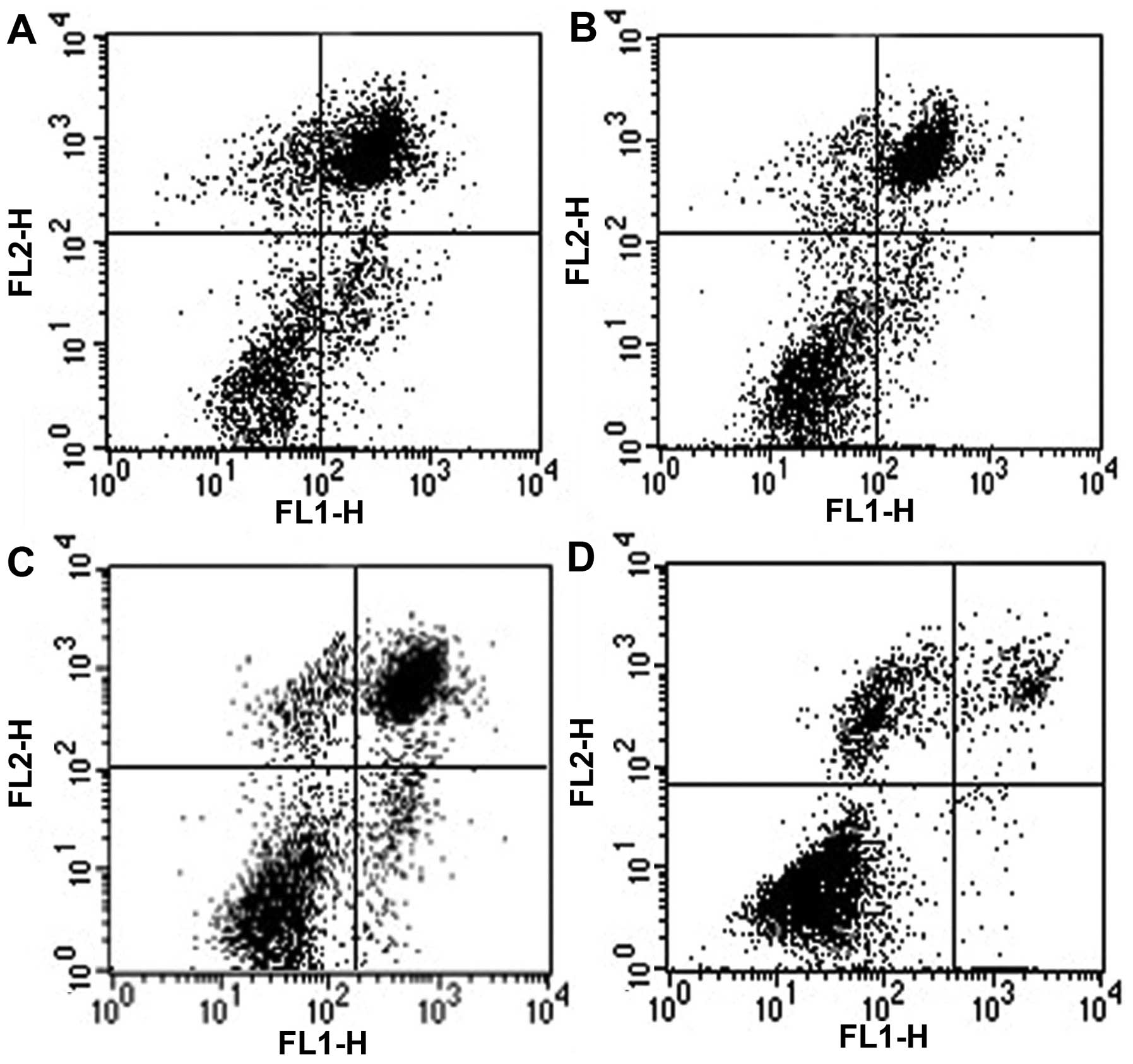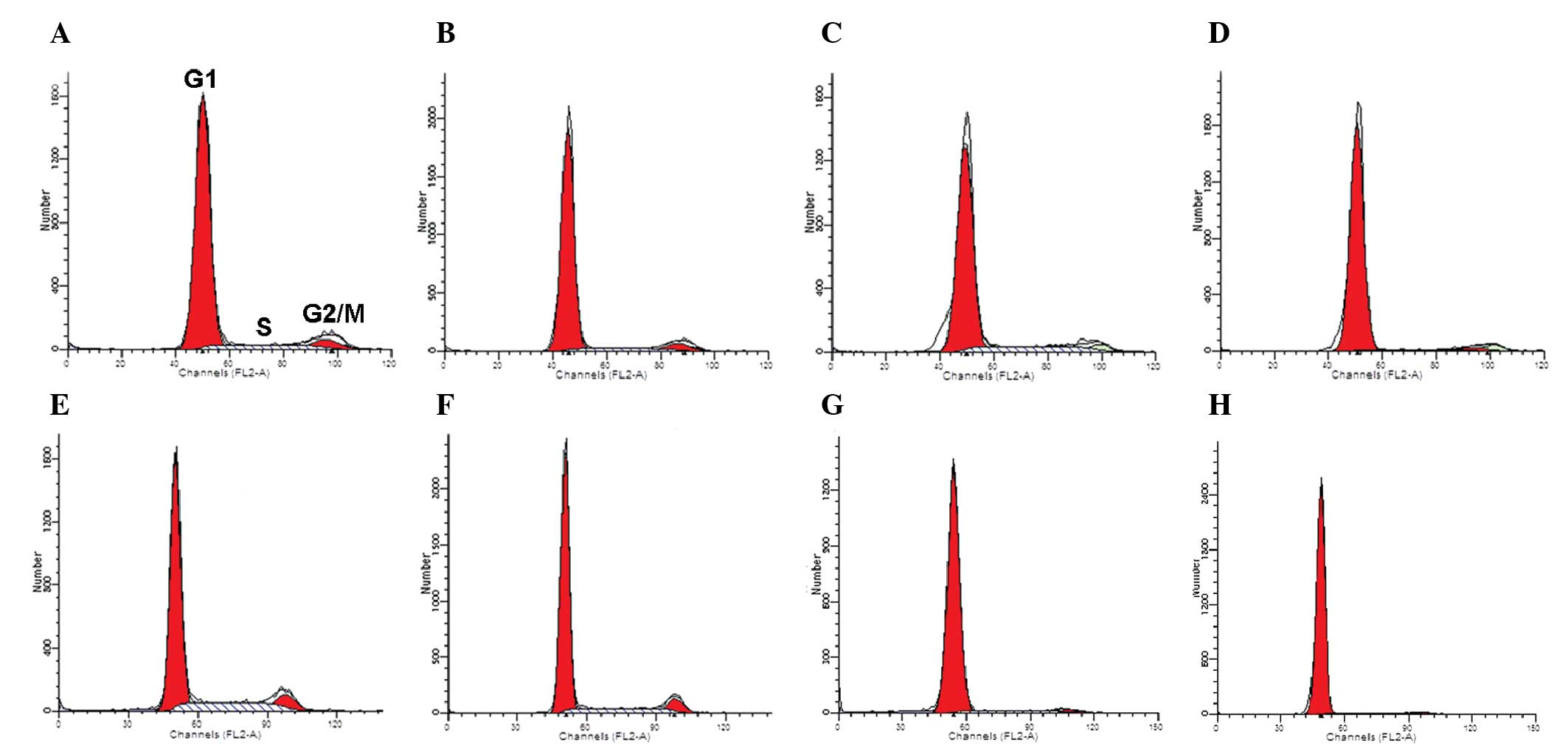|
1
|
Murphy C, Alvarado J, Juster R and Maglio
M: Prenatal and postnatal cellularity of the human corneal
endothelium. A quantitative histologic study. Invest Ophthalmol Vis
Sci. 25:312–322. 1984.PubMed/NCBI
|
|
2
|
Schultz RO, Matsuda M, Yee RW, et al:
Corneal endothelial changes in type I and type II diabetes
mellitus. Am J Ophthalmol. 98:401–410. 1984. View Article : Google Scholar : PubMed/NCBI
|
|
3
|
Bigar F and Witmer R: Corneal endothelial
changes in primary acute angle-closure glaucoma. Ophthalmol.
89:596–599. 1982. View Article : Google Scholar
|
|
4
|
Stainer GA, Akers PH, Binder PS and Zavala
EY: Correlative microscopy and tissue culture of congenital
hereditary endothelial dystrophy. Am J Ophthalmol. 93:456–465.
1982. View Article : Google Scholar : PubMed/NCBI
|
|
5
|
Pipparelli A, Arsenijevic Y, Thuret G,
Gain P, Nicolas M and Majo F: ROCK inhibitor enhances adhesion and
wound healing of human corneal endothelial cells. PloS One.
8:e620952013. View Article : Google Scholar : PubMed/NCBI
|
|
6
|
Gerdes J, Schwab U, Lemke H and Stein H:
Production of a mouse monoclonal antibody reactive with a human
nuclear antigen associated with cell proliferation. Int J Cancer.
31:13–20. 1983. View Article : Google Scholar : PubMed/NCBI
|
|
7
|
Haj FG, Markova B, Klaman LD, Bohmer FD
and Neel BG: Regulation of receptor tyrosine kinase signaling by
protein tyrosine phosphatase-1B. J Biol Chem. 278:739–744. 2003.
View Article : Google Scholar
|
|
8
|
Kikuchi M, Zhu C, Senoo T, Obara Y and
Joyce NC: p27kip1 siRNA induces proliferation in corneal
endothelial cells from young but not older donors. Invest
Ophthalmol Vis Sci. 47:4803–4809. 2006. View Article : Google Scholar : PubMed/NCBI
|
|
9
|
Joyce NC and Harris DL: Decreasing
expression of the G1-phase inhibitors, p21Cip1 and p16INK4a,
promotes division of corneal endothelial cells from older donors.
Mol Vis. 16:897–906. 2010.PubMed/NCBI
|
|
10
|
Wilson SE, Lloyd SA, He YG and McCash CS:
Extended life of human corneal endothelial cells transfected with
the SV40 large T antigen. Invest Ophthalmol Vis Sci. 34:2112–2123.
1993.PubMed/NCBI
|
|
11
|
Wilson SE, Weng J, Blair S, He YG and
Lloyd S: Expression of E6/E7 or SV40 large T antigen-coding
oncogenes in human corneal endothelial cells indicates regulated
high-proliferative capacity. Invest Ophthalmol Vis Sci. 36:32–40.
1995.PubMed/NCBI
|
|
12
|
Ishizaki T, Uehata M, Tamechika I, et al:
Pharmacological properties of Y-27632, a specific inhibitor of
Rho-associated kinases. Mol Pharmacol. 57:976–983. 2000.PubMed/NCBI
|
|
13
|
Narumiya S: The small GTPase Rho: cellular
functions and signal transduction. J Biochem. 120:215–228. 1996.
View Article : Google Scholar : PubMed/NCBI
|
|
14
|
Olson MF, Ashworth A and Hall A: An
essential role for Rho, Rac and Cdc42 GTPases in cell cycle
progression through G1. Science. 269:1270–1272. 1995. View Article : Google Scholar : PubMed/NCBI
|
|
15
|
Ishizaki T, Maekawa M, Fujisawa K, et al:
The small GTP-binding protein Rho binds to and activates a 160 kDa
Ser/Thr protein kinase homologous to myotonic dystrophy kinase.
EMBO J. 15:1885–1893. 1996.PubMed/NCBI
|
|
16
|
Leung T, Manser E, Tan L and Lim L: A
novel serine/threonine kinase binding the Ras-related RhoA GTPase
which translocates the kinase to peripheral membranes. J Biol Chem.
270:29051–29054. 1995. View Article : Google Scholar : PubMed/NCBI
|
|
17
|
Matsui T, Amano M, Yamamoto T, et al:
Rho-associated kinase, a novel serine/threonine kinase, as a
putative target for small GTP binding protein Rho. EMBO J.
15:2208–2216. 1996.PubMed/NCBI
|
|
18
|
Nakagawa O, Fujisawa K, Ishizaki T, Saito
Y, Nakao K and Narumiya S: ROCK-I and ROCK-II, two isoforms of
Rho-associated coiled-coil forming protein serine/threonine kinase
in mice. FEBS Lett. 392:189–193. 1996. View Article : Google Scholar : PubMed/NCBI
|
|
19
|
Uehata M, Ishizaki T, Satoh H, et al:
Calcium sensitization of smooth muscle mediated by a Rho-associated
protein kinase in hypertension. Nature. 389:990–994. 1997.
View Article : Google Scholar : PubMed/NCBI
|
|
20
|
Okumura N, Koizumi N, Ueno M, et al: The
new therapeutic concept of using a rho kinase inhibitor for the
treatment of corneal endothelial dysfunction. Cornea. 30(Suppl 1):
54–59. 2011. View Article : Google Scholar
|
|
21
|
Bi YL, Zhou Q, Du F, Wu MF, Xu GT and Sui
GQ: Regulation of functional corneal endothelial cells isolated
from sphere colonies by Rho-associated protein kinase inhibitor.
Exp Ther Med. 5:433–437. 2013.PubMed/NCBI
|
|
22
|
Peh GS, Beuerman RW, Colman A, Tan DT and
Mehta JS: Human corneal endothelial cell expansion for corneal
endothelium transplantation: an overview. Transplantation.
91:811–819. 2011. View Article : Google Scholar : PubMed/NCBI
|
|
23
|
Li W, Sabater AL, Chen YT, et al: A novel
method of isolation, preservation and expansion of human corneal
endothelial cells. Invest Ophthalmol Vis Sci. 48:614–620. 2007.
View Article : Google Scholar : PubMed/NCBI
|
|
24
|
Blake DA, Yu H, Young DL and Caldwell DR:
Matrix stimulates the proliferation of human corneal endothelial
cells in culture. Invest Ophthalmol Vis Sci. 38:1119–1129.
1997.PubMed/NCBI
|
|
25
|
Engelmann K, Bohnke M and Friedl P:
Isolation and long-term cultivation of human corneal endothelial
cells. Invest Ophthalmol Vis Sci. 29:1656–1662. 1988.PubMed/NCBI
|
|
26
|
Zhu C and Joyce NC: Proliferative response
of corneal endothelial cells from young and older donors. Invest
Ophthalmol Vis Sci. 45:1743–1751. 2004. View Article : Google Scholar : PubMed/NCBI
|
|
27
|
Sastry SK and Burridge K: Focal adhesions:
a nexus for intracellular signaling and cytoskeletal dynamics. Exp
Cell Res. 261:25–36. 2000. View Article : Google Scholar : PubMed/NCBI
|
|
28
|
Worthylake RA, Lemoine S, Watson JM and
Burridge K: RhoA is required for monocyte tail retraction during
transendothelial migration. J Cell Biol. 154:147–160. 2001.
View Article : Google Scholar : PubMed/NCBI
|
|
29
|
Worthylake RA and Burridge K: RhoA and
ROCK promote migration by limiting membrane protrusions. J Biol
Chem. 278:13578–13584. 2003. View Article : Google Scholar : PubMed/NCBI
|
|
30
|
Okumura N, Ueno M, Koizumi N, et al:
Enhancement on primate corneal endothelial cell survival in vitro
by a ROCK inhibitor. Invest Ophthalmol Vis Sci. 50:3680–3687. 2009.
View Article : Google Scholar : PubMed/NCBI
|
|
31
|
Okumura N, Koizumi N, Ueno M, et al: ROCK
Inhibitor converts corneal endothelial cells into a phenotype
capable of regenerating in vivo endothelial tissue. Am J Pathol.
181:268–277. 2012. View Article : Google Scholar : PubMed/NCBI
|
|
32
|
Liu X, Ory V, Chapman S, et al: ROCK
inhibitor and feeder cells induce the conditional reprogramming of
epithelial cells. Am J Pathol. 180:599–607. 2012. View Article : Google Scholar :
|
|
33
|
Seasholtz TM, Majumdar M, Kaplan DD and
Brown JH: Rho and Rho kinase mediate thrombin-stimulated vascular
smooth muscle cell DNA synthesis and migration. Circ Res.
84:1186–1193. 1999. View Article : Google Scholar : PubMed/NCBI
|
|
34
|
Porter KE, Turner NA, O’Regan DJ,
Balmforth AJ and Ball SG: Simvastatin reduces human atrial
myofibroblast proliferation independently of cholesterol lowering
via inhibition of RhoA. Cardiovasc Res. 61:745–755. 2004.
View Article : Google Scholar : PubMed/NCBI
|
|
35
|
Yin J and Yu FS: Rho kinases regulate
corneal epithelial wound healing. Am J Physiol Cell Physiol.
295:C378–C387. 2008. View Article : Google Scholar : PubMed/NCBI
|



